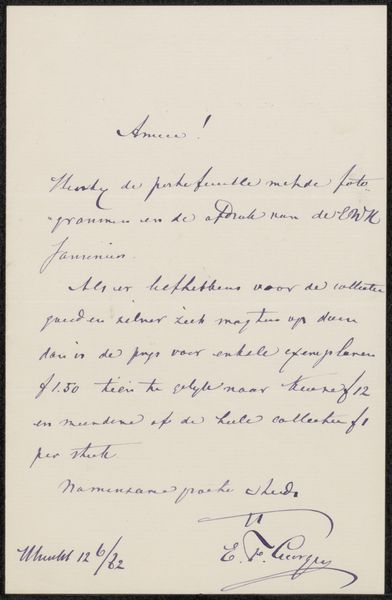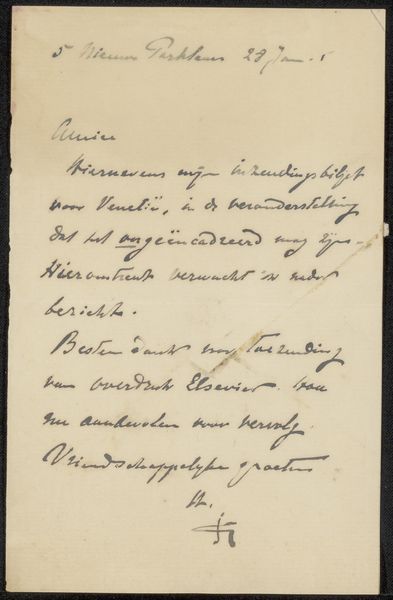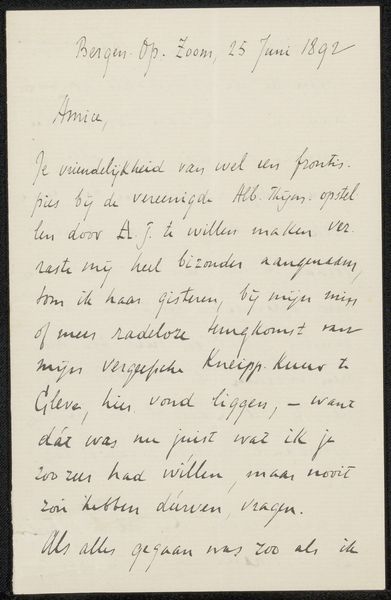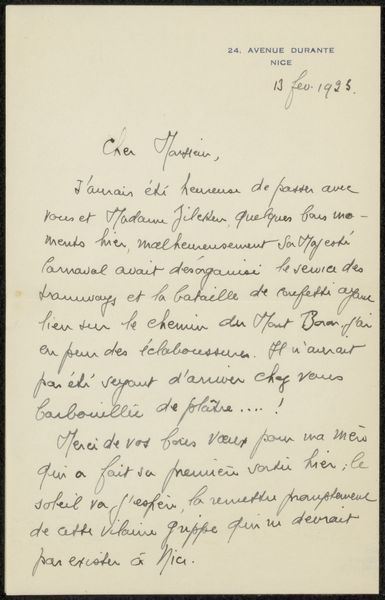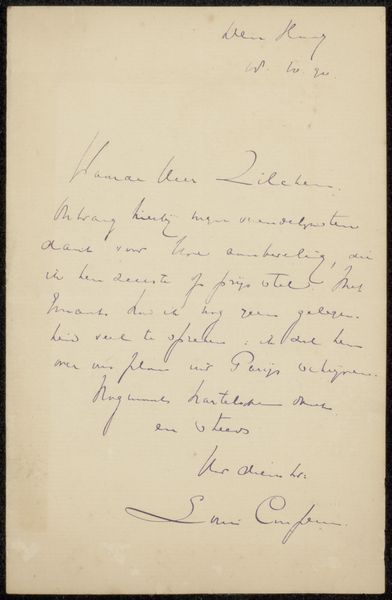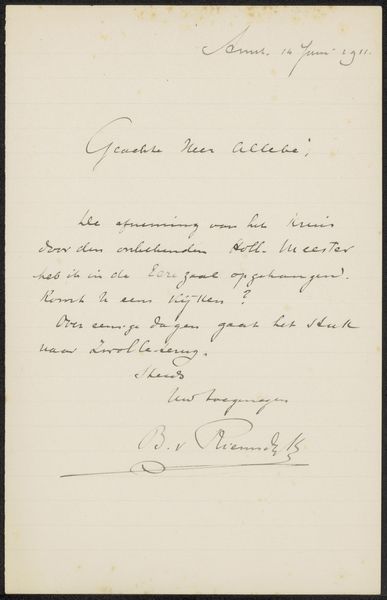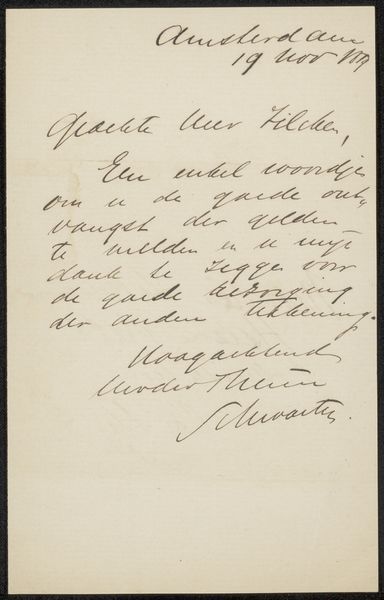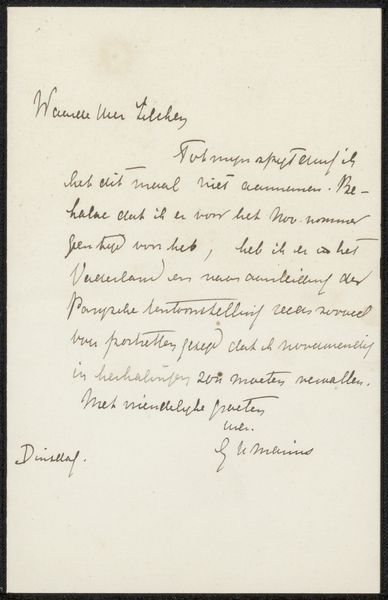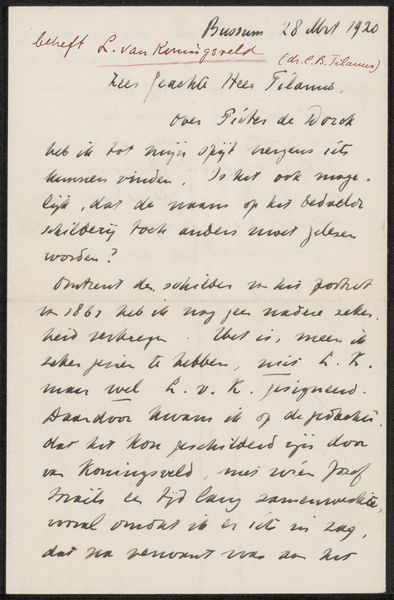
drawing, paper, ink, pen
#
drawing
#
hand written
#
script typography
#
hand-lettering
#
dutch-golden-age
#
hand drawn type
#
hand lettering
#
paper
#
personal sketchbook
#
ink
#
hand-drawn typeface
#
pen-ink sketch
#
pen work
#
sketchbook drawing
#
pen
#
realism
Copyright: Rijks Museum: Open Domain
Editor: Here we have Jan Voerman's "Brief aan Filippo Tessaro," likely from 1890, done in pen and ink on paper. What strikes me is the level of detail and care given to everyday communication; it almost elevates this mundane note into art. What can you tell us about it? Curator: What interests me here is the physical labor involved in the act of writing itself. This wasn't just about conveying information; the materials—the quality of the paper, the ink, the pen—and the skilled hand of the artist transformed the simple task of letter-writing. Consider the economic value placed on these materials, then think about how mass production influences our engagement with written text now. Editor: So you're saying the *how* is just as important as the *what* in this piece? How would this process have shaped the message for both writer and recipient? Curator: Exactly! Voerman wasn't just dashing off a quick email. Each stroke of the pen demanded focus. How did his class position dictate access to these materials? Who had the resources for fine paper and quality ink? Think about the cost and societal view of literacy itself! Editor: That’s fascinating. So reading between the lines – literally, in this case - can teach us about the socio-economic dynamics of the time. Thanks! Curator: Indeed. It prompts us to consider the current digital era of communication and the labor required for new technologies and mass information distribution.
Comments
No comments
Be the first to comment and join the conversation on the ultimate creative platform.

